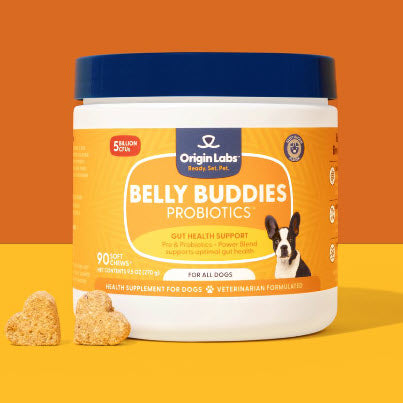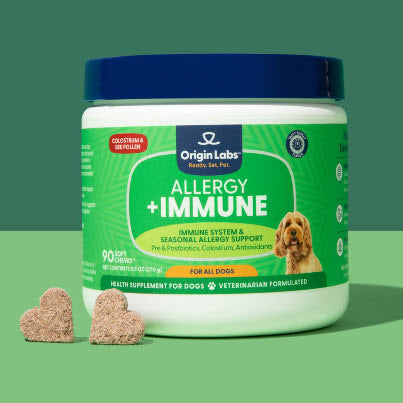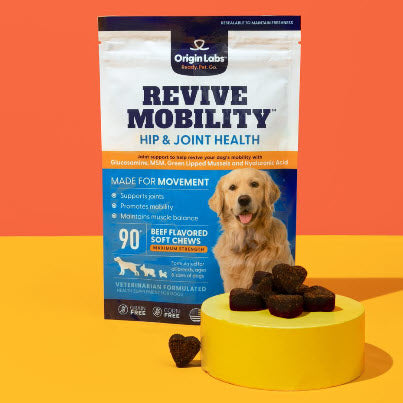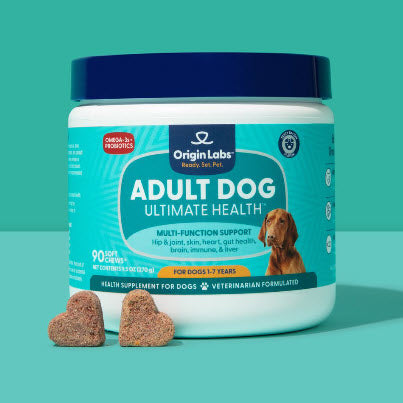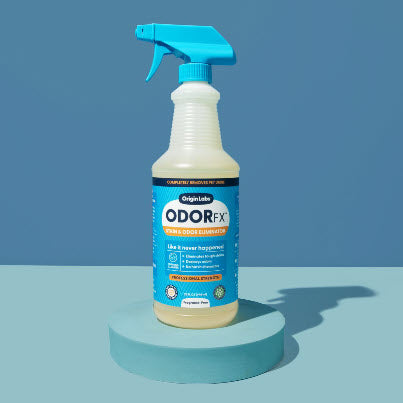Introduction
Lap dogs are small, affectionate breeds that thrive on human companionship and often enjoy being held or sitting in their owner's lap. They are known for their gentle nature, making them ideal pets for individuals seeking a close bond with their furry friend.
Companionship is a significant aspect of pet ownership. Having a lap dog can provide emotional support and comfort, especially for those who live alone or need a loyal companion. The presence of a lap dog can reduce stress, increase feelings of happiness, and enhance overall well-being.
This guide aims to help you find the best lap dog suitable for your lifestyle. By exploring various breeds, understanding their unique characteristics, and considering your personal preferences, you'll be better equipped to choose your perfect cuddle buddy.
Understanding Lap Dogs and Their Appeal
Characteristics That Make a Breed Suitable as a Lap Dog
Lap dogs are typically small dog breeds that possess certain characteristics making them ideal companions for those seeking affectionate, low-maintenance pets. These traits often include:
- Size: Small stature allowing them to comfortably sit or lie on a person's lap.
- Temperament: Calm and friendly nature, making them perfect for close companionship.
- Affectionate Disposition: Natural tendency to form strong bonds with their owners.
- Low Exercise Needs: Requires minimal physical exertion, suitable for those with less active lifestyles.
Why Small Breeds Are Ideal for Cuddling and Being Low-Maintenance Companions
Small breeds are particularly ideal for cuddling due to their manageable size which allows easy handling and comfort during snuggling sessions. They often have:
- Lower Space Requirements: Adapt well to apartment living or homes with limited space.
- Ease of Care: Generally easier to groom and maintain compared to larger breeds.
- Gentle Demeanor: Often more relaxed, making them easier to manage and less likely to cause disruptions.
Common Traits Among Popular Lap Dog Breeds
Several small dog breeds are renowned for their suitability as lap dogs. Here are some common traits among the popular choices:
Bichon Frise
- Cheerful Personality: Known for their happy disposition and playful nature.
- Minimal Shedding: Hypoallergenic coat that sheds very little, reducing the need for frequent cleaning.
Pug
- Quirky Personality: Endearing antics and expressive faces make them delightful companions.
- Brachycephalic Considerations: Due to their flat faces, they can be prone to respiratory issues, requiring mindful care.
Cavalier King Charles Spaniel
- Affectionate Nature: Extremely loving and eager to please, making them excellent family-friendly dogs.
- Adaptability: Versatile enough to thrive in various living situations, from bustling households to quieter environments.
French Bulldog
- Low-Energy Needs: Perfect for urban dwellers who prefer a dog with moderate exercise requirements.
- Popularity in Cities: Their compact size and calm demeanor make them a favorite among city residents.
Emotional Benefits of Having a Lap Dog as Part of Your Family
Incorporating a lap dog into your family can bring numerous emotional benefits:
- Companionship: Provides constant company and alleviates feelings of loneliness.
- Stress Reduction: The simple act of petting a dog can lower stress levels and promote relaxation.
- Emotional Support: Offers unconditional love and support, enhancing overall well-being.
Lap dogs not only fulfill the role of being adorable cuddle buddies but also contribute significantly to emotional health through their loyal companionship. Whether it's the cheerful Bichon Frise or the adaptable Cavalier King Charles Spaniel, each breed brings unique qualities that enrich the lives of their owners.
For those considering the nutritional needs of smaller breeds, exploring options such as Puppy Health Supplements can support well-being right from the start. Additionally, understanding how probiotics support senior dogs can help support vitality in your older lap dogs.
In-depth Look at Top 4 Lap Dog Breeds
Bichon Frise
Pros:
- Cheerful Personality: Known for their happy and playful demeanor, making them great companions.
- Low Shedding: Their curly coat minimizes shedding, reducing the risk of allergies.
- Adaptable: Suitable for both apartment living and larger homes.
Cons:
- Grooming Needs: Regular grooming is required to maintain their coat and prevent matting.
- Separation Anxiety: They can become anxious if left alone for long periods.
Health Considerations:
- Skin Allergies: Prone to skin issues requiring attention and potential dietary adjustments.
- Dental Health: Regular dental care is essential due to their predisposition to dental problems.
Pug
Pros:
- Quirky Personality: Pugs are known for their charming, quirky behaviors that bring joy to any household.
- Affectionate Nature: They thrive on human interaction and love to cuddle.
Cons:
- Respiratory Issues: Being a brachycephalic breed, they are prone to breathing problems, especially in hot weather.
- Weight Management: Tendency to gain weight easily, requiring careful diet management.
Health Considerations:
- Eye Conditions: Prone to conditions like corneal ulcers due to their prominent eyes.
- Hip Dysplasia: Regular check-ups are necessary to monitor joint health.
Cavalier King Charles Spaniel
Pros:
- Affectionate Companions: Known for their loving nature, they form strong bonds with their families.
- Adaptable Lifestyle Requirements: Suitable for various living situations, from apartments to larger homes.
Cons:
- Grooming Needs: Their long, silky coat requires regular brushing to prevent tangles.
- Prone to Separation Anxiety: They do not do well when left alone for extended periods.
Health Considerations:
- Heart Problems: Susceptible to mitral valve disease, regular vet visits are essential.
- Ear Infections: Their floppy ears can trap moisture, leading to infections if not properly cleaned.
French Bulldog
Pros:
- Low-Energy Needs: Suitable for urban living due to their moderate exercise requirements.
- Popular Among Urban Dwellers: Their compact size and affectionate nature make them ideal city pets.
Cons:
- Heat Sensitivity: Prone to overheating in warm climates due to their short snouts.
- Stubbornness in Training: They can be quite stubborn, requiring patience during training sessions.
Health Considerations:
- Respiratory Issues: As a brachycephalic breed, they may face breathing difficulties and need monitoring during physical activities.
- Spinal Disorders: Prone to intervertebral disc disease (IVDD), necessitating careful handling and regular vet check-ups.
Training Your Lap Dog for a Harmonious Home Life
Training is crucial in shaping your lap dog's behavior and nurturing a strong, loving bond between you and your furry friend. Using effective dog training methods can transform your home life, making interactions more enjoyable and stress-free.
Positive Reinforcement Techniques
One of the most recommended approaches is positive reinforcement. This method focuses on rewarding desired behaviors to encourage their recurrence. Treats, praise, and toys can serve as powerful motivators for lap dogs. For instance:
- Treats: Small, tasty rewards given immediately after the desired behavior.
- Praise: Verbal affirmations such as "Good dog!" accompanied by petting.
- Toys: Interactive playtime with favorite toys as a reward.
By consistently rewarding good behavior, your lap dog will quickly learn which actions are acceptable.
Basic Commands Every Lap Dog Should Learn
Ensuring your lap dog has good manners both at home and in public spaces involves teaching several basic commands:
- Sit: Fundamental for establishing control and ensuring calm behavior.
- Stay: Useful for keeping your dog in one place, preventing accidents or unwanted wandering.
- Come: Essential for recalling your dog, especially in potentially unsafe situations.
- Leave It: Prevents your dog from picking up harmful objects or engaging with distractions.
- Heel: Encourages walking beside you without pulling on the leash.
Training sessions should be short but frequent to keep your dog engaged without becoming overwhelmed. Patience and consistency are key components in successful training.
Building a Strong Bond
Effective training not only ensures good manners but also strengthens the emotional connection between you and your lap dog. Understanding each other's cues through training builds trust, making your relationship more harmonious.
Embrace these techniques to nurture a well-behaved, happy companion who enriches your daily life with affection and loyalty.
Everyday Health Tips for Small Breed Companions
Maintaining an everyday healthcare routine for small breed dogs is essential to ensure their well-being and longevity. Regular vet check-ups play a crucial role in identifying potential health issues early, allowing for prompt treatment and prevention of serious problems. These visits typically include:
- Routine vaccinations
- Dental check-ups
- Weight monitoring
- Blood tests
Nutrition Recommendations
Providing a balanced diet tailored specifically for small breeds supports optimal health over time. Key considerations include:
- High-quality protein: Essential for muscle maintenance.
- Healthy fats: Necessary for skin and coat health.
- Vitamins and minerals: Support overall body functions.
Choosing food formulated specifically for small dogs ensures they receive the right nutrients in appropriate amounts. Consult your veterinarian to determine the best dietary plan based on your dog's specific needs and lifestyle.
Grooming and Dental Care
Regular grooming helps keep your lap dog clean and comfortable. Important grooming tasks include:
- Brushing: Reduces shedding and prevents matting.
- Bathing: Keeps skin healthy.
- Nail trimming: Prevents overgrowth and discomfort.
Dental care should not be overlooked. Daily tooth brushing and dental chews can help maintain oral hygiene, reducing the risk of periodontal disease.
By adhering to these everyday health tips, you can significantly enhance your small breed companion's quality of life, ensuring they remain happy and healthy members of your family.
Choosing the Right Lap Dog Breed: A Guide Based on Lifestyle Compatibility
Choosing the right breed based on personal circumstances is crucial to ensure a harmonious relationship with your new furry friend. Understanding the nuances of different breeds and how they fit into your daily routine can make all the difference.
Factors to Consider
1. Activity Level Requirements
Some breeds like the French Bulldog are known for their low-energy needs, making them perfect for apartment dwellers or individuals with a more sedentary lifestyle.
On the other hand, breeds like the Cavalier King Charles Spaniel may require moderate exercise, which could be ideal for those who enjoy regular walks and outdoor activities.
2. Living Space
Small breeds adapt well to various living environments. However, consider if your space is conducive to their needs. For example, a Pug does well in smaller spaces but also loves having access to a yard or park.
Assess whether you have enough room for essentials like dog beds, toys, and feeding stations without overcrowding your living area.
3. Allergies and Shedding
If allergies are a concern, opting for breeds like Bichon Frise that shed minimally can be beneficial.
Regular grooming routines can help manage shedding and keep your home clean.
4. Temperament and Personality
Each breed has a distinct personality. Bichon Frise are cheerful and affectionate, while Pugs are known for their quirky nature.
Understanding these traits can help match you with a breed that complements your temperament and lifestyle.
5. Time Commitment
Puppies require significant time investment for training and socialization. Consider if you're ready to dedicate this time or if an older dog might be a better fit.
Evaluate your daily schedule to ensure you can meet the dog's needs consistently.
6. Health Considerations
Be aware of breed-specific health issues. Pugs are prone to respiratory problems due to their brachycephalic structure.
Regular vet check-ups and preventive care are essential to maintain your dog's health.
Examples of Lifestyle Matches
- Urban Dwellers: French Bulldogs thrive in city environments due to their low exercise needs and compact size.
- Active Individuals: Cavalier King Charles Spaniels enjoy walks and playtime, making them great companions for active lifestyles.
- Families with Children: Bichon Frise are gentle and playful, fitting well in family settings with kids.
Selecting a lap dog breed that aligns with your lifestyle ensures both you and your pet will enjoy a mutually rewarding companionship. Consider these factors carefully to find the perfect cuddle buddy tailored to your personal circumstances.
Building a Strong Bond Through Effective Communication Techniques
Communicating Effectively with Your New Pet
Creating a deep bond with your lap dog begins with understanding their unique way of communicating. Dogs rely heavily on non-verbal cues to express their feelings and needs, making it crucial for owners to become adept at reading these signals.
Importance of Understanding Non-Verbal Cues
Dogs communicate through a variety of non-verbal cues, including:
Body Language: Posture, tail position, and ear orientation can tell you a lot about your dog's mood.
- Relaxed and Happy: Loose posture, wagging tail, ears in a natural position.
- Anxious or Scared: Tail tucked, body low to the ground, ears back.
- Aggressive or Agitated: Stiff body, tail raised, ears forward.
Facial Expressions: Dogs use their eyes and mouth to communicate.
- Content and Relaxed: Soft eyes, slightly open mouth.
- Alert or Excited: Wide eyes, mouth closed or slightly open.
- Stressed or Uncomfortable: Yawning when not tired, lip licking.
Vocalizations: Barks, whines, and growls convey different messages.
- Playful Barking: High-pitched and repetitive.
- Warning Growl: Low-pitched and sustained.
- Whining: Can indicate discomfort or desire for attention.
Building Trust Through Positive Interactions
Effective communication also involves positive reinforcement and consistent interactions. Here are some strategies to enhance your bond:
- Consistent Training: Reinforce commands with treats and praise to build trust. Consistency helps your dog understand what is expected of them.
- Quality Time: Spend time playing and cuddling. Activities like fetch or gentle petting sessions strengthen your emotional connection.
- Respect Their Space: Recognize when your dog needs alone time. Pushing interaction when they need rest can lead to stress.
Tools for Better Communication
Several tools can aid in improving communication with your lap dog:
- Clicker Training: A clicker can help mark desirable behaviors clearly and promptly.
- Interactive Toys: Puzzle toys stimulate your dog's mind and provide opportunities for positive interaction.
- Training Classes: Enrolling in training classes can enhance both obedience skills and the bond between you and your dog.
Understanding non-verbal cues is essential for communicating effectively with your new pet. By paying close attention to their body language, facial expressions, and vocalizations, you can respond appropriately to their needs and emotions. This understanding fosters a deeper bond built on trust and respect.
Conclusion: Finding Your Perfect Cuddle Buddy!
Choosing the right lap dog is a journey that involves careful consideration of your lifestyle and preferences. Each breed comes with unique traits, making some better suited to specific living situations and personal needs.
- Personal Lifestyle Fit: Evaluate your daily routine and activity level. Some breeds require more exercise and engagement, while others are content with minimal activity.
- Individual Preferences: Think about what you value in a companion—whether it’s a dog’s temperament, grooming needs, or health considerations.
Your perfect lap dog is out there waiting to offer companionship, warmth, and joy. Embrace the process, weigh your options thoughtfully, and welcome a new furry friend into your life who complements your lifestyle beautifully.
Happy cuddling! 🐾
FAQs (Frequently Asked Questions)
What are lap dogs and why are they popular?
Lap dogs are small dog breeds that are known for their affectionate nature, calm demeanor, and low exercise needs. They make perfect companions due to their ability to cuddle and provide emotional support, making them ideal for families and individuals seeking companionship.
Which breeds are considered the top lap dogs?
Some of the top lap dog breeds include the Bichon Frise, Pug, Cavalier King Charles Spaniel, and French Bulldog. Each breed has unique traits and care considerations that make them suitable as loving companions.
How important is training for a lap dog?
Training is crucial in shaping behavior and building a strong bond with your lap dog. Basic commands help ensure good manners at home and in public spaces, enhancing the overall experience of pet ownership.
What health tips should I consider for my small breed companion?
Maintaining an everyday healthcare routine is essential for small dog breeds. Regular vet check-ups can prevent potential health issues, while proper nutrition supports their optimal well-being over time.
What factors should I consider when choosing a lap dog breed?
When selecting a lap dog breed, consider your personal circumstances such as activity level requirements, living situation, and lifestyle compatibility. It's important to choose a breed that fits well with your daily routine and preferences.



